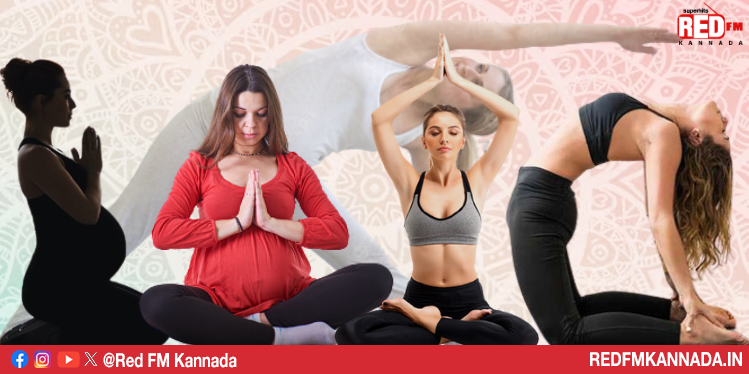Prenatal yoga is a comprehensive approach to exercise that promotes stretching, mental cantering, and concentrated breathing, much like other forms of birthing preparation. According to research, prenatal yoga is safe and can be very beneficial for both pregnant mothers and their unborn children.
Prenatal yoga is a style of yoga specifically made for expectant mothers. Equilibration between the emotional, mental, physical, and spiritual dimensions is what yoga aims to achieve. Prenatal yoga focuses on safe practices and poses in all stages of pregnancy to help you relax your body and get ready for childbirth. Yoga can enhance your physical and mental well-being, not just during pregnancy. Before beginning any prenatal yoga lessons, it is best to speak with your doctor if you hadn’t practiced yoga prior to becoming pregnant.
- Padmasana – The lotus pose, also known as Padmasana, promotes meditation and reduces stress. Like Baddha Konasana, this pose also facilitates birthing for all of the pregnant women who are out there. Additionally, it lowers your blood pressure to a manageable level. Here are 10 pregnancy-related avoidable mistakes.
It is a traditional Indian ritual in which a person sits cross-legged with his or her feet resting on the thighs on the opposite side. In the Hindu, Jain, and Buddhist traditions, the lotus attitude is a well-known posture for meditation. Padmasana enables the body to be perfectly still for an extended period of time.
2. Vajrasana – The first trimester of pregnancy is a highly beneficial time to practice vajrasana. Put your ankles and knees together as you knead on your yoga mat. Breathe in and out as you begin. For 20 minutes, lay your arms down with your hands facing down on your thighs. Make sure your head and back are both straight. This supports digestion and tones the muscles in the pelvis.
In the early stages of pregnancy, you can handle this. Vajrasana, often known as the diamond posture, is a very basic yoga stance that assists with digestion and calms the mind and back. Read: Pregnancy-related aches and pains, including backaches.
3. Parvatasana – The words Parvat, which Means Mountains, and asana, which means stance, combine to form the Sanskrit word Parvatasana. Parvatasana is a traditional yoga asana or pose that is used to extend the spine laterally (upward). One of the easiest and most powerful yoga asanas, the Mountain Pose has been practiced for countless years.
Parvatasana’s advantages for pregnancy posture include:
- Relieves back and shoulder strain.
- Carpal tunnel syndrome-friendly
- Reduces neck tenseness
- Can aid in avoiding tension headaches
4. Ustrasana – During your pregnancy, this modified position is a nice supported backbend that is great for opening up the shoulders, chest, and hips.
In addition, the quads, knees, and pelvis all feel deeply stretched. “Having flexible legs will help to prevent strain or injuries when pushing your baby out,” With only a little assistance, you can do this simple workout and mild position. It relieves stomach ache while extending the hamstrings and groin area. Through physical and mental relaxation, it can also be utilized as a meditation pose and helps to reduce stress. Additionally, this position promotes healthy digestion, which relieves heartburn and other digestive issues experienced by pregnant women. The hips, thighs, and pelvic muscles are also stretched and opened up, which facilitates a simple labor.
5. Gomukhasana – The English term for the Sanskrit posture known as Gomukhasana is Cow Face Pose. Our crossed legs in this position resemble a cow’s face. The feet resemble the ears of a cow, the shins the side of the cow’s face, and the knees the mouth.
We gain from the Gomukhasana by correcting our posture. It allows for a variety of shoulder movements as well as stretching of the arms, shoulders, chest, armpits, and hips. It increases flexibility and activates the svadisthana (spleen), sacral chakra, and anahata (heart chakra) chakras in our bodies. Gomukhasana provides a number of health advantages, including:
Treats sciatica, Lowers blood pressure, Improves erection quality, Relieves frozen and stiff shoulders, Lengthens spine and corrects poor posture, reduces tension and anxiety Strengthens the muscles in the back, hips, ankles, shoulders, thighs, inner armpits, triceps, and chest. Stimulates the kidneys.



















































